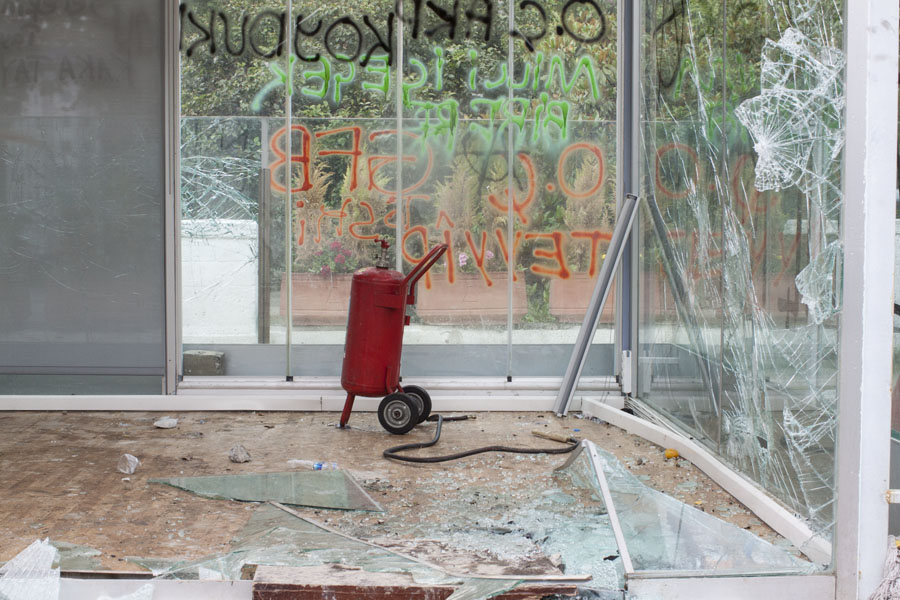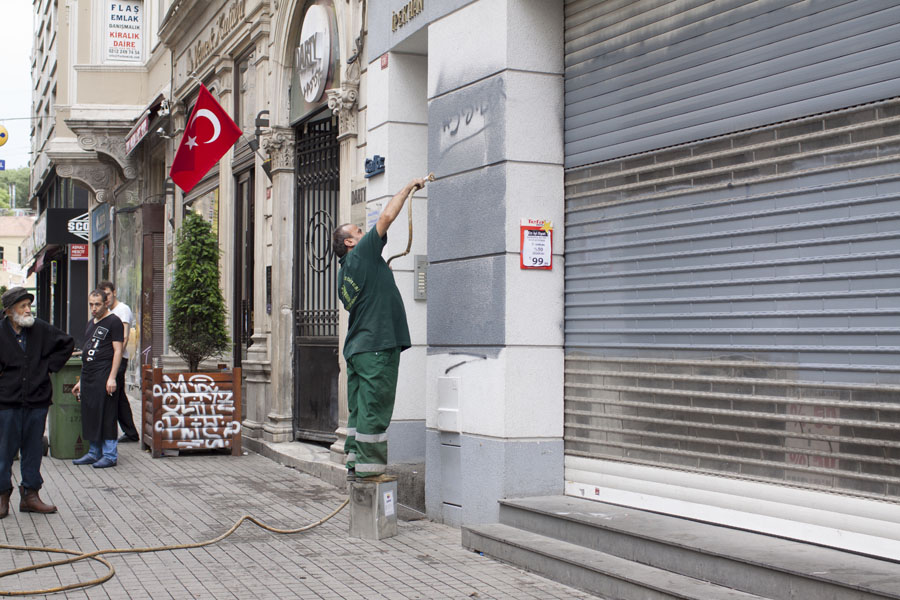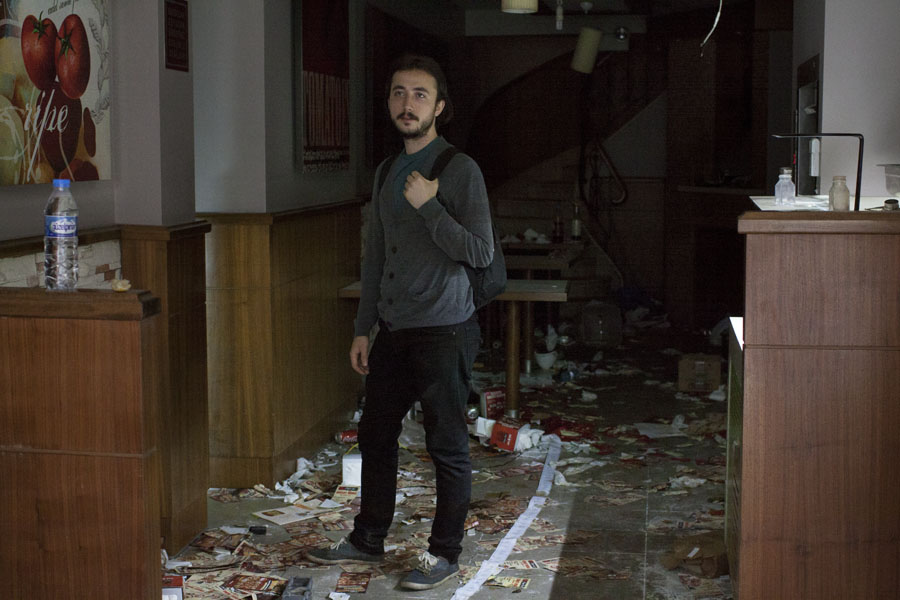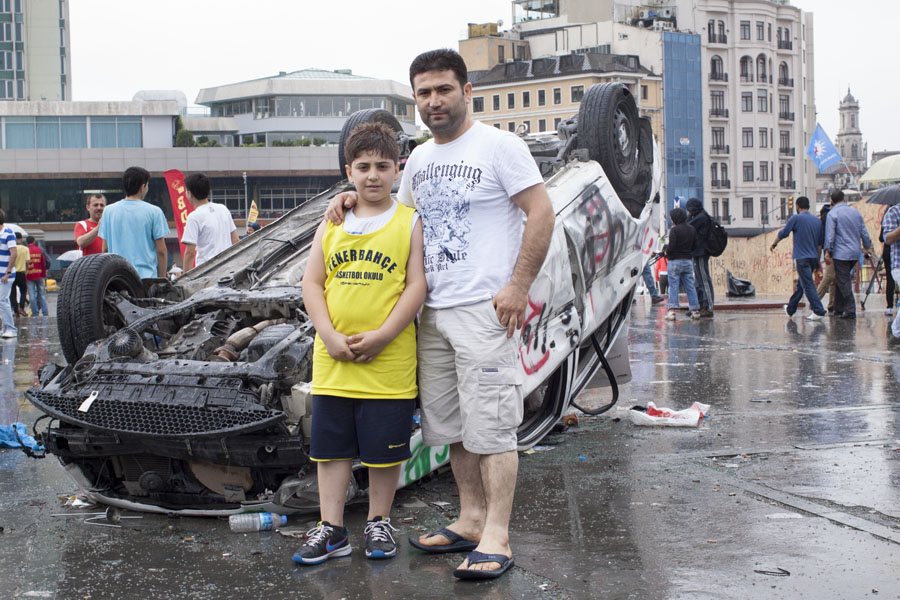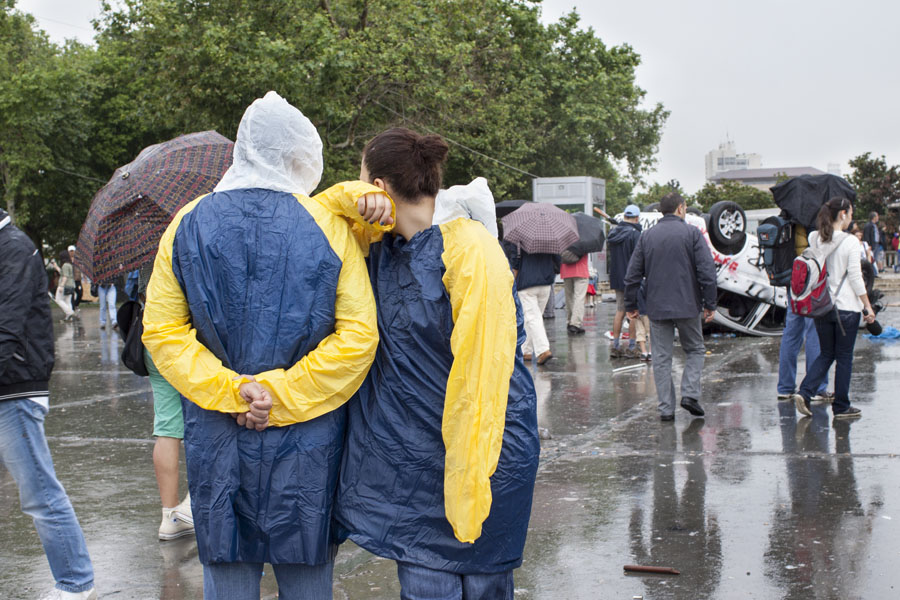When two Israelis pop over to experience a neighboring country’s revolution, they get their first glimpse of graffiti, in the full sense of the word. Photographs by May Castelnuovo (click to magnify in a new tab).
Click here for the full series.
ISTANBUL – Nothing seems strange at first, Istanbul does seem atypically sleepy and empty on arrival, but then, it is a Sunday morning. The sense of normality persists on the way up the hill that cradles the historical district of Beyoglu. Even at the top, a few blocks away from Taksim square, it is only disturbed by a chemical stench, not unlike that of acetone.
I don’t think much of that smell at first, nor of the ruckus of service vehicles, traveling up elegant Istiklal avenue. I simply think of them as a nuisance. Go on, morning cleaners, come and part and leave the street to pedestrians and cute historical trams.
But hold on. This really is acetone, or turpentine, or some other paint diluter. Tankers full of it are driving up Istiklal to clean off graffiti.
There is plenty of graffiti here, some of it proposing police posts be used as public restrooms, others comparing Recep Tayyip Erdoğan to one of various fascist leaders or to a mangy dog. I have never seen anything remotely similar on Tel Aviv’s streets, not even on the hottest days of that summer in 2011. Should we have vandalized? Would we have gone further? Will the Turks?
The rage grows more and more colorful, more and more bold, as we advance up the street. Last night the police finally withdrew from Taksim Square, leaving it to the protesters. And the protesters took it. The further we walk, the more diverse are the signs of anarchy. Trash is strewn everywhere, mixed with the sorry remains of shop windows. At one corner is a black bank. It was burned down to the ground. At another, a Pizza Hut restaurant was destroyed. Corn and cabbage cover the floor, mixed into a fresh salad along with hundreds of advertising leaflets and the tiny splinters of what once was a table. At the gallery level, the floor is covered with human feces.
Stepping in with us, similarly curious, is Songur, a student of engineering. He admits being party to last night’s wreckage, but explains that he was on the other side of Taksim Square, and only now came down the avenue to explore the southern side of the damage. There was no shortage of damage where he spent the night, barricades were built of overturned vans and food stalls there, most of them eventually burned.
With his kind blue eyes, intellectual beard and lazy-Sunday-on-the-couch attire, Songur hardly looks the vandal.
“How do you feel when you look at all this?” I wave at the bit of hell where pizza was once served.
“I feel good,” he says, “I feel… better. I saw the burnt bank and that really moved me. It gives you a sense that money doesn’t mean anything any more.”
At this point in Istanbul’s turbulent week, many words pour over the conflicting raisons d’etre of the aspiring protest movement. Some of the demonstrators are said to be there against Erdoğan. Others, so we are told, are still there for the park whose planned uprooting sparked the riots. At times the struggle is described as a dispute over urban landscaping that was hijacked by activists for a secular Turkey, who were in turn joined by economic protesters, Communists of various creeds. Is Songur an “Occupier” rather than a tree hugger, or an Erdogan-hater?
“The park was the last straw,” he says, “But there were other straws: the introduction of modest dress codes in schools, the stationing of police on university campuses, human rights, big money and the city… everything is connected.”
Sometime, when things break, they come together. On the stairs leading to the now world-known Gezi Park, an activist points to the trees and explains: “Before WWI, barracks used to stand here. This high ground was used by Islamist militants to crack down on the more liberal population that lived in the neighborhood. Now they are trying to claim it back.”
Et voila: the fate of the trees and threat of Islamism get tied together in a perfect bunch. Such comments would have sounded so much stranger if not for the dozen or so overturned vehicles lying within 30 feet of our history teacher, the bonfires burning all around and the peculiar mix of activists drilling into the boots of cars in search of loot, tourists taking photos with their iPads, journalists interviewing one another and eccentrics (at least one eccentric) playing the harmonica with a funny hat on.
For one Felliniesque moment at noon on Taksim, it appears that the Turkish summer’s reason can only be found in madness.The movement, pushed too forcefully by astonishingly violent police, seems to have combusted into peculiarity, even idiocy.
But then something happens that alters that feeling. The rioters return, wearing rubber gloves and carrying trash bags and shovels.
They are indeed last night’s rascals. The city’s cleaners are here too, wearing green and snapping photos of the unthinkable mess with their smartphones. But it is the non-uniformed cleaners that draw our attention. I speak to one, a doctoral student, who commits entirely to the struggle. “I’ll stay here till the end,” he says, while scooping some of Taksim’s debris into the bag, “and I’ll come back to clean every time.”
At “The Kebap,” a restaurant around the corner, the waiter points to the television set, where a Taksim solidarity protest taking place in New York is broadcast. The protests finally made it to local media, as well as the worldwide support for them. The waiter feels no need to hide his own excitement at the unfolding events. A new wind is blowing through Istanbul, and so what if it reeks a bit of nail polish remover?


